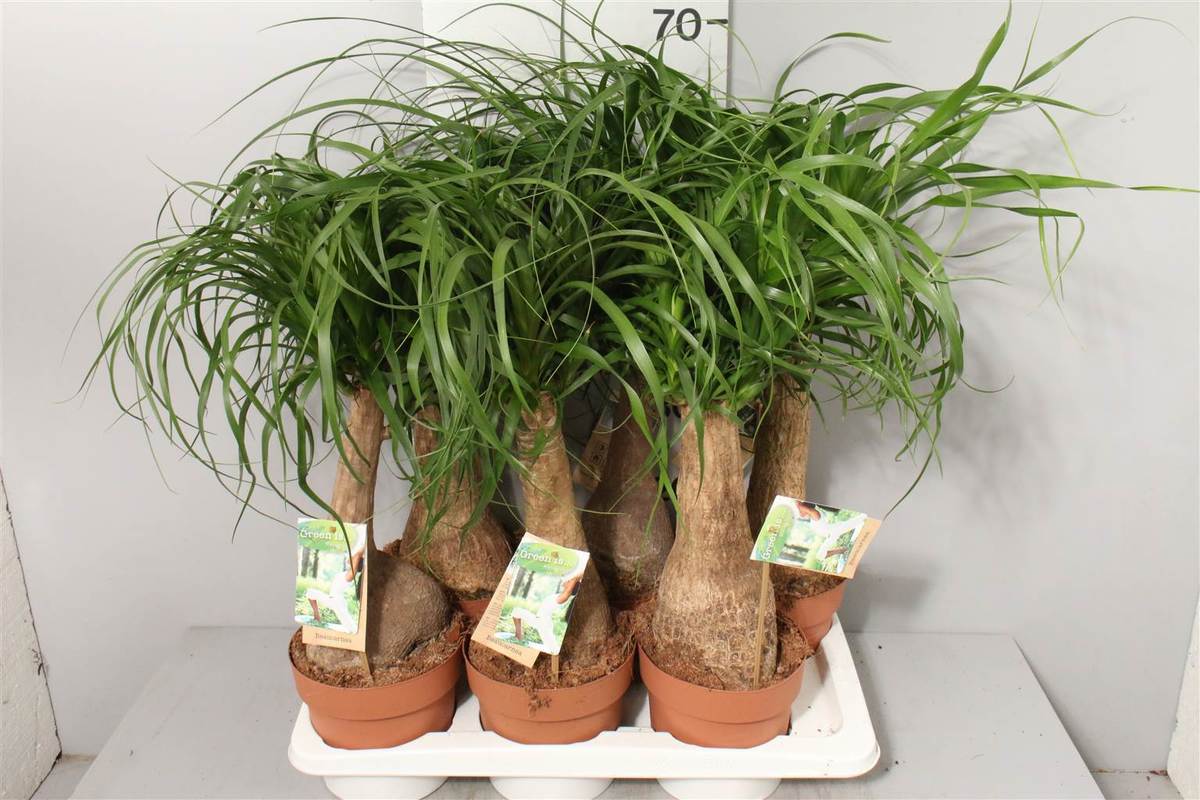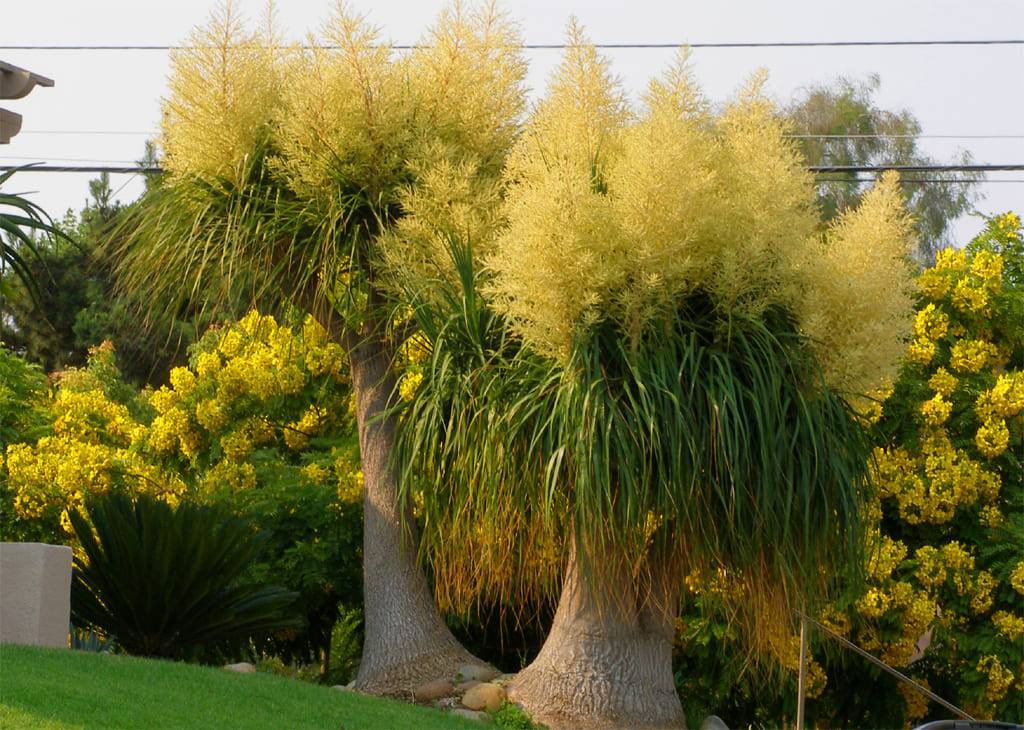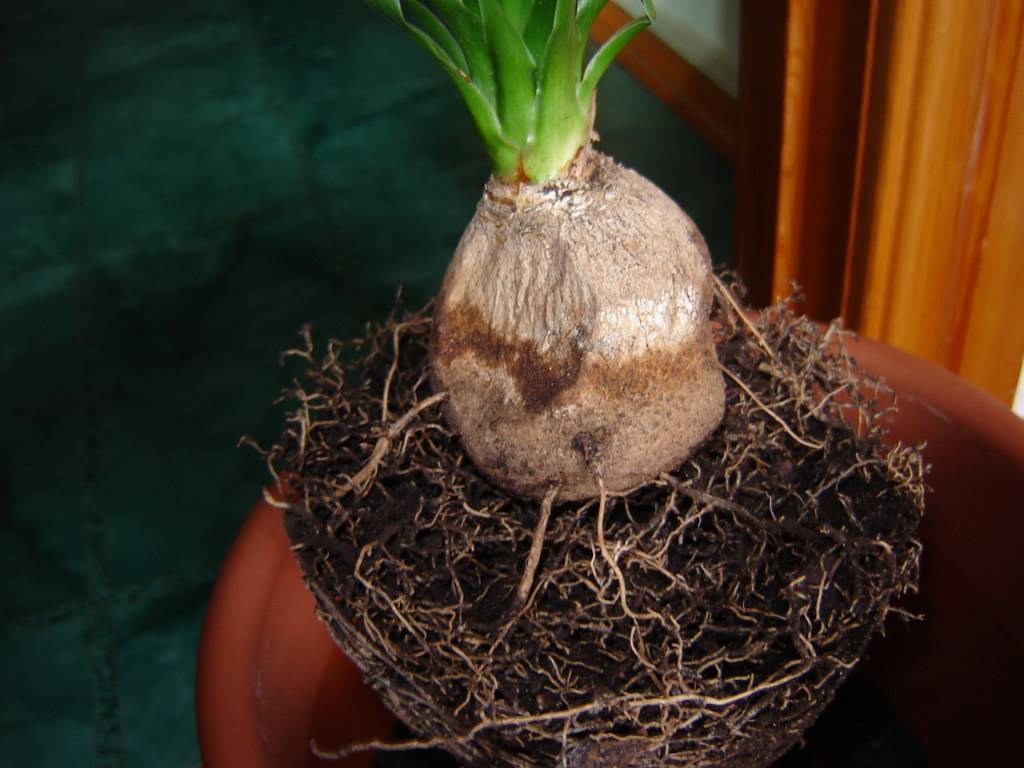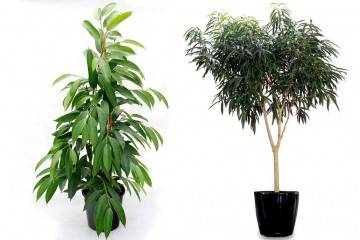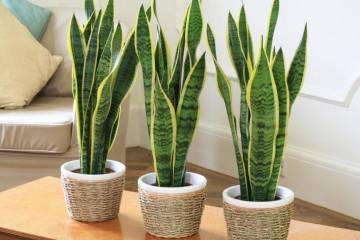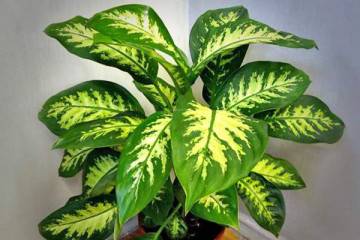Nolin flower - home care
Content:
Due to its unusual appearance, tropical nolina from southern Mexico has gained popularity among Russian flower growers. Currently, there are about 30 varieties of this plant, some of which are actively used as decoration for gardens and home interiors.
Appearance and common varieties
Nolina is similar to a palm tree, as the green "cap" of the plant is usually located at the top of the trunk. However, it has no kinship with palm trees, but belongs to the Asparagus family.
Among the popular varieties grown outdoors, the following are noted:
- long-leaved - a tree with long foliage and a trunk covered with cork-like bark;
- Lindemeira is a plant with a short trunk and a dense bunch of thin leaves hanging down to the ground;
- matapskaya - a two-meter tree with a crown that hides the trunk;
- Nelson's bottle tree is a plant with hard leaves sticking out in different directions, covering most of the trunk.
Popular varieties of nolin "room palm" are:
- compressed - a squat plant with flat long leaves and a bottle trunk;
- thin - a tree with a spherical trunk growing in bunches of greenery and pink flowers;
- protruding - similar to thin, but has hard protruding leaves;
- bent (Recurvata) - a plant with a long wide trunk, tapering upwards, the ribbon-like rough leaves of which are collected in a bunch in the upper part of the trunk.
The latter variety is especially loved by flower growers.
The appearance of the plant is due to the peculiarities of the place of growth. In the arid regions of southern Mexico and Central America, the thick trunk helps to retain moisture, and the tough, pointed leaves prevent it from evaporating quickly.
In the natural environment of the nolin plant, the flower rises above the crown of the tree and has the shape of a fluffy and dense panicle of pinkish petals.
In the wild, bokarnea recurvata grows up to 8 m, at home - up to 1.5 m.
How to take care of zero recurve
The bottle tree is unpretentious and feels great indoors.
For a nolin plant, home care implies adherence to simple rules.
Accommodation and temperature
Bocarnea is a light-loving flower. When choosing a place on the windowsill, you should stay in the south-west and south-east direction. Greens should be protected from direct sunlight. Whitish leaves signal a lack of light.
Creation of special temperature conditions is not required, it is enough to maintain the temperature at the level of 20-22 ° С.
In summer, it is permissible to keep the exotic beauty nolina recurvata on the balcony. Palma nolina loves fresh air, but is afraid of rains, so the balcony should be glazed.
Watering
In the process of caring for nolina, the plant should be watered with boiled water at room temperature as the top layer of the earth dries up (on average, once every 7 days). The best way is to immerse the pot in a container of water for half an hour.
Excessive soil moisture should be avoided, which contributes to rotting of the bulb and depletion of the stem. Pale and sluggish greenery speaks of the need to reduce the amount of watering.
With a lack of water, the leaves of the plant collect moisture from the air and send it to the caudex. The bokarnea trunk of the bent one begins to increase unevenly, cracks and scars appear on it, the green crown is thinning.
Soil for room nolina
The optimal soil composition is as follows:
- peat - 1 tsp;
- sod land - 2 hours;
- leaf land - 1 hour;
- sand - 0.5 tsp;
- vermiculite - 0.5 tsp;
Top dressing
The plant is fed with phosphorus-potassium mixtures once every 20-30 days from September to March. It is not necessary to add nitrogen fertilizers to the soil, since its excess contributes to the softening of the leaves and leads to the loss of a beautiful appearance.
Pruning
It is not required to trim the crown of the bokarnea bent to give it the desired shape. The dried leaves of the tree do not fall off, but create a kind of brown halo around the trunk. If the yellowed foliage significantly impairs the appearance, it can be carefully cut off.
Winter care
In winter, a flower needs a temperature of 10-12 ° C. Since at this time the bokarney is at rest, it does not need watering.
From December to February, due to a lack of moisture, the trunk of a palm tree can wrinkle. In the spring, Nolina will get the required amount of water, and the situation will improve.
In autumn and winter, Nolin needs additional lighting. A lamp is installed over the plant for 2-3 hours a day.
Flower propagation
Nolin's palm can multiply by seeds and lateral processes.
By shoots
When using this method, the side shoots are cut with a knife as close to the trunk as possible. To stimulate the formation of roots, the shoots are placed for a day in a phytohormone solution, and then in the ground. A pot with a rooted bokarnei cut, folded back, is covered with a cap and exposed to the light. From time to time, the earth is moistened with a spray bottle.
Reproduction of bokarnea bent with seeds
Before using the seed, it is soaked for 2 days in water. After the expiration date, the floating seeds are thrown away, the rest are dried on a napkin.
Sowing is done in late February - early March. After treatment with growth stimulants, each seed of nolina recurvat is placed into the ground to a depth of 1 cm. The container with the soil is covered with a film (cap).
The container is placed in a room with a temperature above 25 ° C, far from drafts and with a sufficient amount of light.
The sprouts emerge in 3-5 weeks. After the first leaves appear, the cap is removed to harden the plant. When 4 leaves grow, the seedlings can be transplanted to a permanent place.
Transfer
After buying a room nolina, the plant should not be transplanted immediately, it takes a week to adapt to a new place. This period will also show the presence or absence of diseases.
A transplant is necessary for the active growth of greenery. Adult plants are replanted every 4 years, young plants - once a year.
The pot for transplanting nolina should be chosen wide and shallow. The height of the flowerpot should be about 3 times the width. A drainage layer (expanded clay) is placed at the bottom of the container. Next, the soil is laid out, the amount of which should be enough to close the root system (but not more).
The flower should be shifted carefully so as not to damage the fragile roots. The soil should cover 2/3 of the caudex.
Pests and diseases
Proper care of sideknot at home prevents diseases caused by violation of conditions of detention and the appearance of pests.
Elimination of harmful factors
Novice growers often wonder why the leaves of the nolina recurvata (Beaucarnea Recurvata) begin to dry. Drying of greenery is a sign of a violation of the conditions for keeping the flower. To return a beautiful view to the crown, harmful factors should be excluded:
- exposure to direct light;
- the presence of drafts;
- being near the battery;
- improper watering.
If the irrigation conditions are violated (excess moisture), and the trunk of the nolina has rotted, the plant should be transplanted. The softened parts are cut off and powdered with activated carbon powder.
If decay has affected a significant part of the caudex, it will not be possible to save the flower.
Pest control
Bocarnea is resistant to parasites, but spider mites, scale insects and thrips may appear on the leaves. They must be removed with a cotton pad soaked in soapy water and treated with insecticides (karbofos, actellik, fitoverm, etc.).
Growing and caring for nolina at home does not require much effort and special experience. The bottle tree is unpretentious and can tolerate long periods of drought. Together with durability, the exotic beauty has an unusual appearance, which makes it an ideal decoration for residential and office premises.
